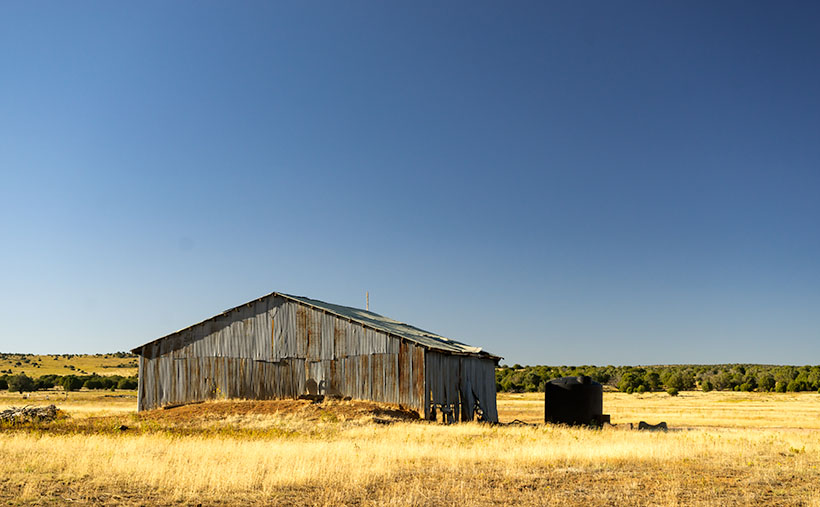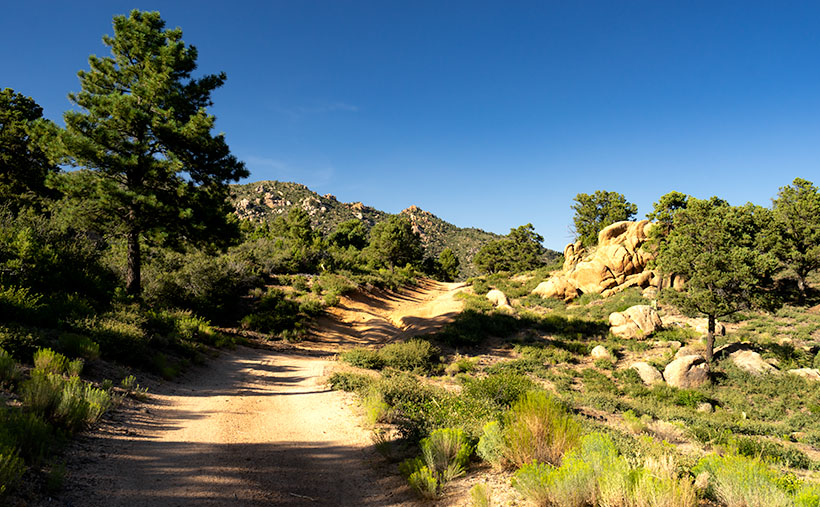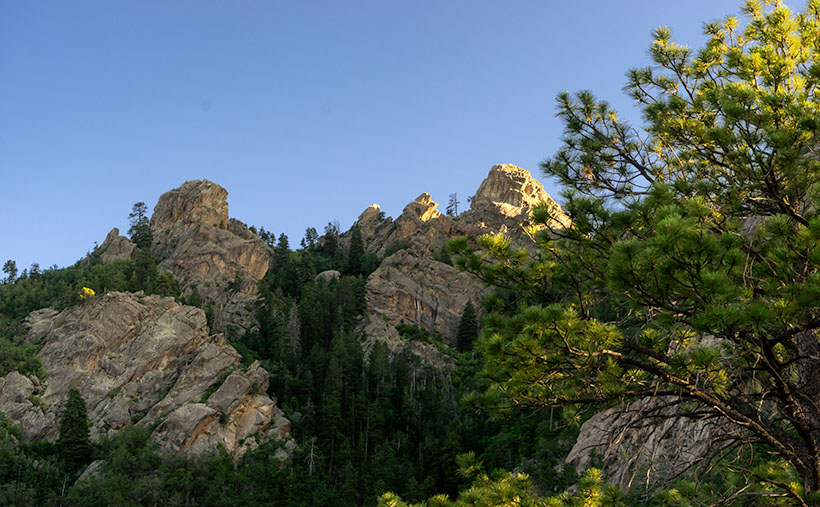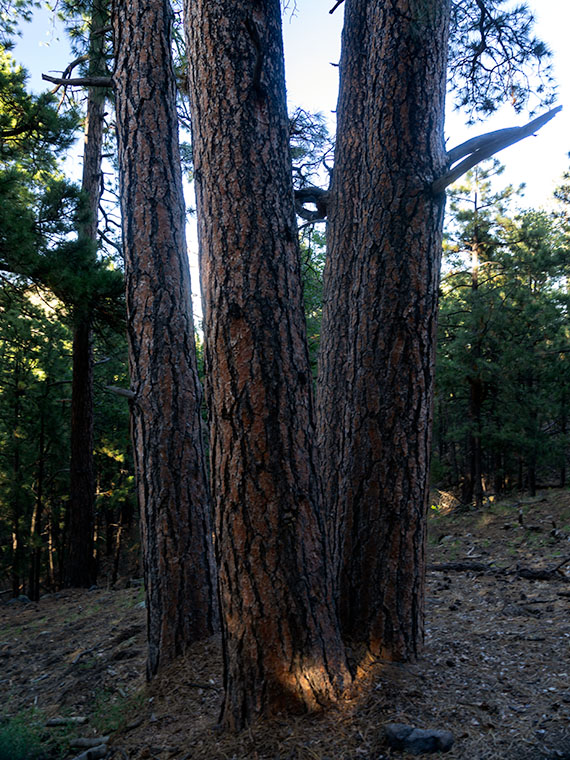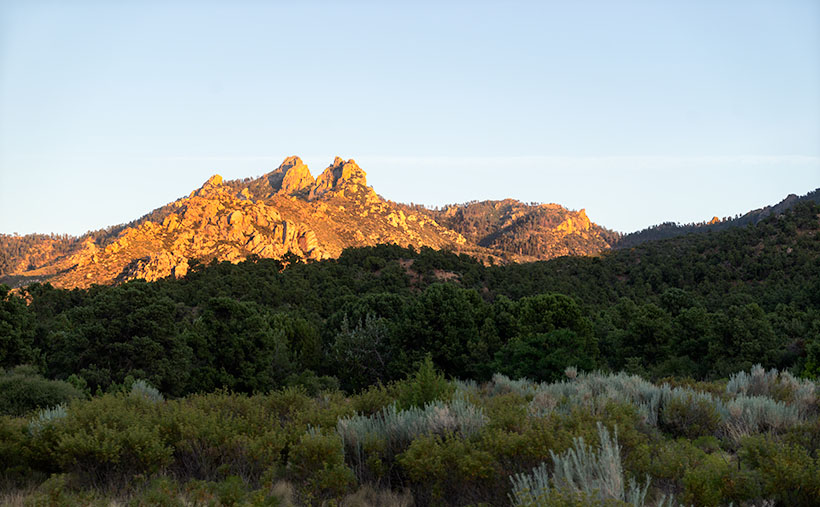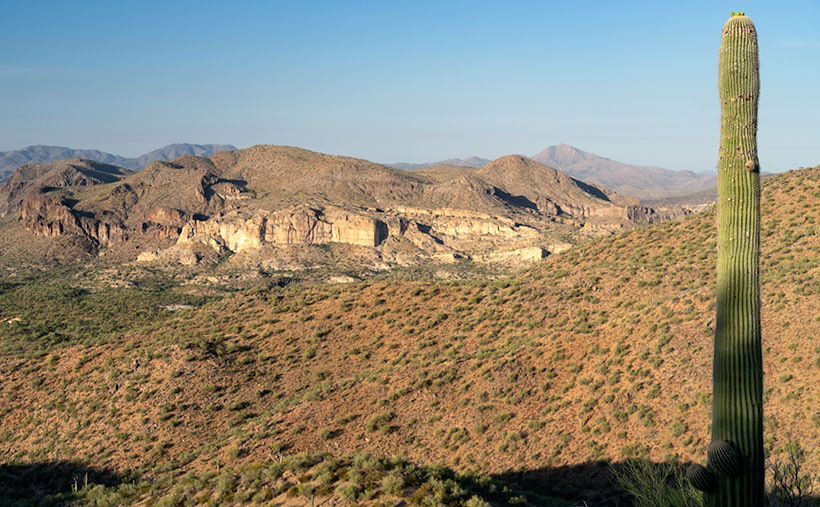After stopping to photograph the shed featured last week, Queen Anne and I continued our journey along the Camp Wood Route. From the building and corals, the road is better graded, so we were able to pick up the pace, and we soon reached the edge of a canyon called Connell Gulch. On the far side of the canyon are the 6400′ Connell Mountains rising from the east bank of a creek below.
From the canyon’s edge, the road descends northward, and at the bottom, the landscape flattens and opens into grassy pastures filled with cattle. It was only another mile or two before we passed the headquarters of the Yolo Ranch—a sprawling 110-thousand-acre ranch established in 1885 by Tip Wilder. As it turns out, we had been traveling on ranch property since passing the gate I mentioned last week.
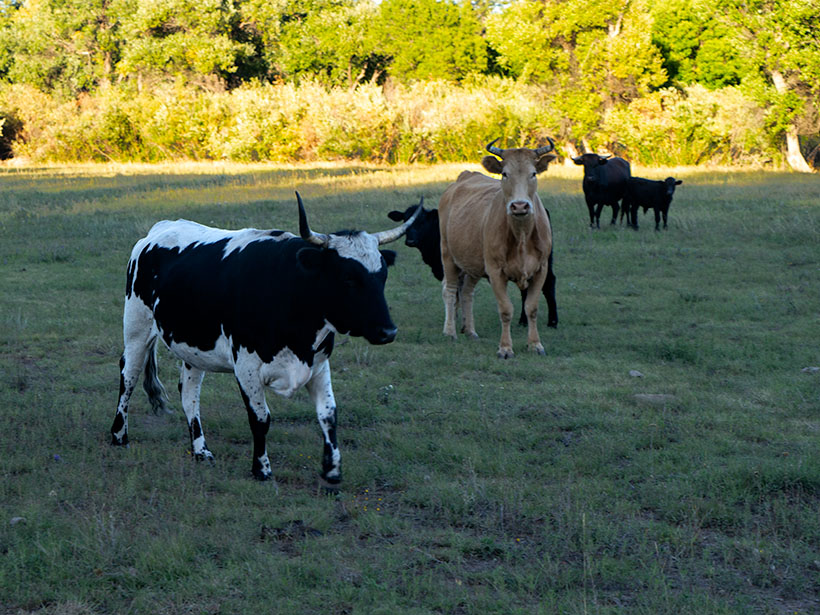
Here, we saw an idyllic valley with meadows and ponds, surrounded by ponderosa pine-covered mountains. Behind fences, there were a variety of grazing cattle. We even spotted a herd of deer, which were too skittish to let me get near and take a good photograph. Yolo is a working cattle and guest ranch, but I’m not sure they still offer accommodations. Authors have used it as a location in books, and the farm was the subject of a film documentary. In 2010, Yolo Ranch was for sale with an asking price of 12 million dollars, and I found the sales brochure online if you want to know more. It must be a peaceful place to live, but I’ll bet the TV reception is lousy.
Back on the road, reaching Camp Wood didn’t take long. It was only a short distance on the tree-lined trail. This area was initially called Kymo by Paul Wright. According to Arizona Place Names, he was from Kentucky, while his wife was from Missouri. A decade later, the U.S. Cavalry—led by Captain Wood—camped here on a scouting expedition, and the postal service chose Camp Wood for the post office in 1926.
I had a good feeling about this area. I thought that it would make a good campsite in milder weather. The elevation is 5800′, so the temperature would be excellent in spring and fall. Having a cup of coffee in the chilly mornings is always a good thing. There aren’t any facilities, water, or electricity, but that’s roughing it.
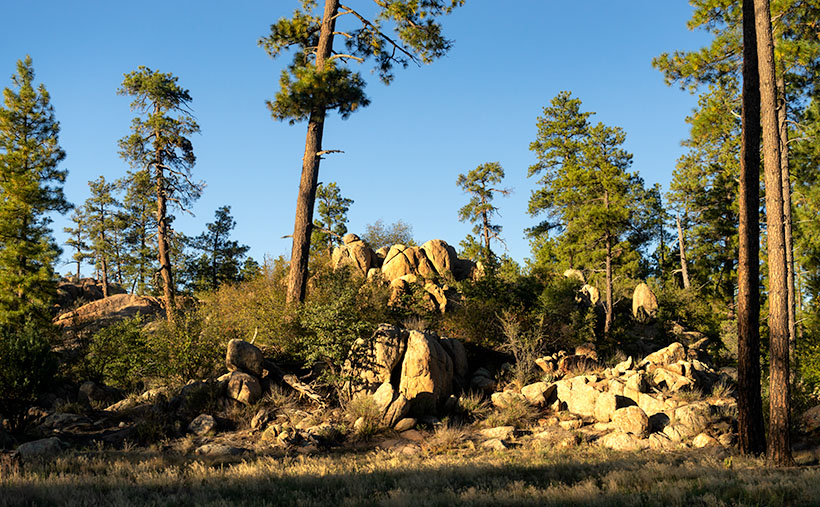
When we got to the Camp Wood area, the sunlight already had a lovely golden glow, and off the road a distance, it highlighted a mound of granite. I hiked to them and captured the moment in this week’s featured image, Camp Wood Boulders. I like how the afternoon light highlights granite before a clear blue sky. I’m also happy with the red-barked ponderosa frame in the scene.
Click here to see a larger version of Camp Wood Boulders on its Web Page. I hope you enjoy viewing it. Next week, we’ll make another stop along Camp Wood Road for an entirely different scene. I hope you’ll join us.
Until next time — jw

